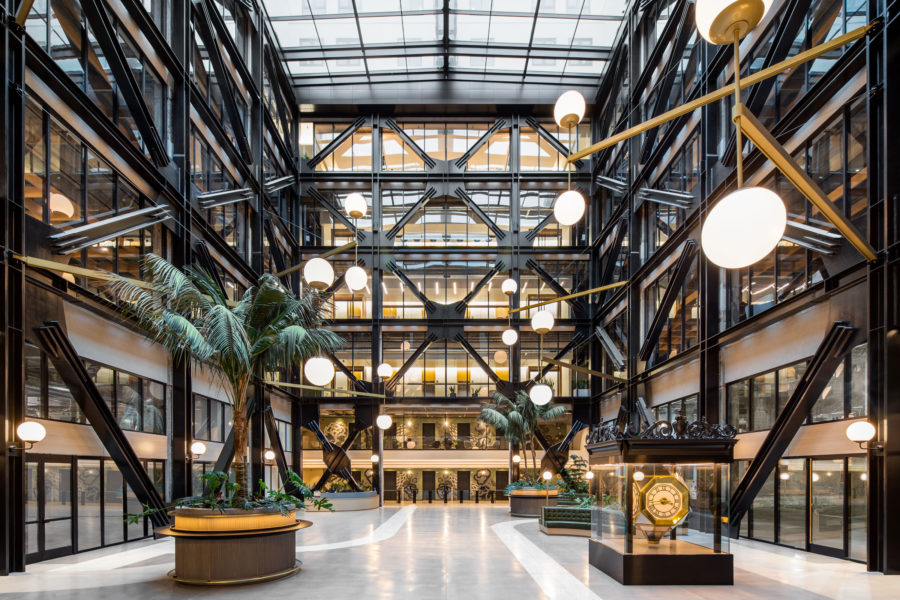In our rapidly evolving world, the concept of eco-friendly construction ideas has become more relevant than ever. As we face environmental challenges, homeowners and real estate developers are seeking ways to adopt sustainable building practices. This article will explore innovative and practical eco-friendly construction ideas that can lead us toward a greener future.
From renewable energy options to green materials, the spectrum of eco-friendly construction offers numerous ways to reduce carbon footprints while building efficient and healthier living spaces. Join us as we delve into various aspects of modern construction methods that benefit both the environment and us.

The Importance of Sustainable Construction
The essence of sustainable construction lies in its ability to meet present needs without compromising future generations. The construction industry significantly impacts the environment, making it crucial to adopt eco-friendly methods that promote sustainability.
Environmental Benefits
Utilizing eco-friendly construction ideas helps in minimizing waste, conserving natural resources, and reducing greenhouse gas emissions. By choosing materials that have a lesser environmental impact, the construction sector can make strides towards a cleaner planet.
Economic Advantages
While the initial cost may seem higher, investing in eco-friendly construction often results in long-term savings. Energy-efficient homes not only reduce utility bills but also increase property value, benefitting both homeowners and developers.
Key Eco-friendly Construction Ideas
1. Renewable Energy Integration
One of the most popular eco-friendly construction ideas is incorporating renewable energy sources like solar panels and wind turbines. These technologies help in generating clean energy and offsetting reliance on fossil fuels.
2. Using Recycled and Sustainable Materials
Materials such as bamboo, recycled steel, and reclaimed wood are increasingly used in construction projects. These materials not only reduce waste but also enhance aesthetics and durability.
3. Enhancing Energy Efficiency
Implementing energy-efficient windows, insulation, and HVAC systems is another practical eco-friendly construction practice. These features significantly cut down energy consumption, leading to greener homes.
4. Implementing Water Conservation Techniques
Water conservation is key in sustainable construction. Techniques like rainwater harvesting and installing low-flow fixtures help in reducing water wastage, promoting resource conservation.
The Role of Technology in Green Building
Technology plays a pivotal role in modern construction techniques by aiding the development and implementation of eco-friendly construction ideas. From smart home automation to building information modeling (BIM), technology enhances sustainability.
Smart Home Systems
Smart home technologies allow homeowners to monitor and manage energy usage efficiently, aligning well with sustainable practices.
Building Information Modeling (BIM)
BIM offers detailed insights into a building’s lifecycle, enabling informed decisions that enhance sustainability and reduce environmental impact.
Practical Steps to Implement Eco-friendly Construction
Planning and Design
A well-thought-out plan considering local climate, resources, and design efficiency is crucial for eco-friendly construction. You can find detailed steps for planning sustainable buildings in [green construction guide](https://brucemasseyconstruction.com/green-construction-guide/) (dofollow).
Partnerships with Green Suppliers
Collaborating with suppliers who share a commitment to sustainability ensures access to eco-friendly materials and enhances the project’s sustainability goals.
Adoption of Sustainable Practices
Developers embracing sustainable practices can set a precedent in the industry, showcasing the success of green building both economically and environmentally.
FAQs on Eco-friendly Construction
What are the best materials for eco-friendly construction?
The best materials include bamboo, recycled steel, straw bales, and rammed earth, all offering sustainability and durability.
How can eco-friendly construction reduce costs?
Though initial costs can be higher, ongoing savings in energy and water bills and increased property value offset the investments.
How does renewable energy benefit buildings?
Renewable energy sources like solar and wind reduce dependency on non-renewable resources, lower energy costs, and minimize environmental impact.

Conclusion
The journey towards eco-friendly construction is not only attainable but necessary for a sustainable future. By integrating these ideas, we can build healthier and more efficient environments for generations to come. As we move forward, the collaboration of stakeholders across the construction industry will continue to drive innovation [in sustainable building practices](https://brucemasseyconstruction.com/sustainable-building-best-practices/) (dofollow).
Explore more about the benefits of green construction through external sources like [green standards insights](https://www.tunley-environmental.com/en/insights/green-building-standards-in-the-us)(nofollow) to broaden understanding and inspire further innovations in the field.
This article contains affiliate links. We may earn a commission at no extra cost to you.



